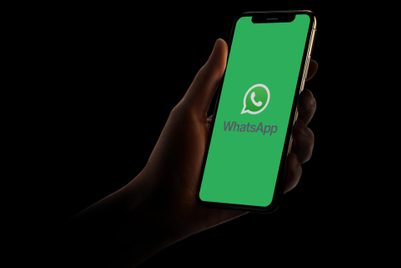
Picture this: a world-renowned DJ drops a video on Instagram. There’s no logo in sight. There’s no overt branding. There’s not a single piece of marketing collateral to be seen. All you hear is the roar of a Formula 1 engine — and within it, a strange, piercing “Stiiiiiiing!”
This moment, first captured by global DJ Armin van Buuren on May 23rd, went viral almost instantly — not because it was a sleek advertisement, but because it felt raw, spontaneous and culturally driven. The video struck a chord across social media; fans, celebrities, and F1 insiders alike hopped on it, wondering if the “Stiiiiiiing” was a coincidence, a clever trick — or something more.
The subsequent ripple — from racer Jenson Button and actor Ranveer Singh to actor Kunal Khemu — turned a simple observation into a talking point. To date, it has garnered close to 68,000 likes on Instagram and counting.
This was Pepsi’s Sting choosing to lead with a non-visual, sonic story in its debut as the official energy drink of F1. And this move signalled a dramatic shift in the way a legacy FMCG giant is framing its marketing in a culture-first era.
Why sound, not sight, was chosen
For a sport defined by its exhilarating noise — the dramatic revving of its powertrains — choosing a sonic path made perfect sense. Instead of adding more logos to a track already saturated with sponsor messages, Pepsi chose to leverage a universal F1 icon — its own soundtrack.
Vandita Pandey, vice president for marketing, International Beverages and Hydration at PepsiCo told Campaign, “At Sting, we believe the most powerful brand moments aren’t manufactured; they’re discovered.”
She explained that Formula 1 is a sport where sound is emotion, physics, and adrenaline all at once. The Sound of Formula 1 is hardwired into intuitive thinking — it triggers instant recognition, gut-level emotion, and automatic recall. The roar of those engines isn’t just background noise; it’s the first thing fans think of when they think of F1.
“So, when fans began hearing the unmistakable ‘Stiiing’ in the roar of the Formula 1 engines, it wasn’t just a branding opportunity; we captured the consumer attention and connected it to Sting, in a huge disruptive way, in no time,” Pandey added. This tactic highlights a shift from visibility to resonance — from trying to interrupt a moment to adding a layer to it.
Viral by design: Measuring success beyond impressions
The approach to this campaign was a calculated risk. There were no logos, no overt branding messages, just a raw, culturally driven moment. It challenged the conventional view that visibility equals impact. But it was a risk founded in deep consumer insight.
“For a younger generation of F1 fans, the love for the sport is not limited to the on-track developments. It is as much about the culture, competitive teams, the F1 drivers, as it is about the race itself. And this moment tapped straight into that world,” Pandey opined.
The team made a conscious bet on cultural momentum and organic virality, letting the moment grow through icon and influencer participation. Success, therefore, was measured not in conventional impressions or reach, but in the authenticity of engagement — the ripple effects of a moment spreading through social media, conversations and, ultimately, into popular culture.
Pandey feels that today’s audiences aren’t passive. They actively seek what’s new and what resonates. That instinct for discovery is exactly what fuelled the rise of the “Stinggg” moment.
This tactic underscores a key observation for marketers: when you allow a story to emerge organically, it can become far more powerful and credible than a manufactured narrative.
A culture crossover — from interruption to integration
Pepsi’s approach signals a dramatic shift in its marketing playbook — from interruptive messages to immersive experiences. “This isn’t a campaign, it’s a cultural crossover. Sting x F1 is a blueprint for how we see the future of brand-building: immersive, participatory, and platform-native. We’re moving from interruption to integration — from ads to experiences,” Pandey revealed.

This signals a future where companies will embed their messages within the content and culture their consumers care about, instead of interrupting it. The result is a more sophisticated form of engagement, where the fans become advocates and co-creators.
Activations, digital layers, and local appeal
With the F1 partnership spanning 21 races across 5 continents and a total viewership of 1.6 billion, the opportunity for immersive, multichannel engagement is vast. This will manifest through “consumer promotions, online activations, partnerships, social activities, and more”— all designed to connect at different points of the F1 experience. Importantly, these initiatives will be tailored to local markets, reflecting their unique passions.
“There is a big opportunity to activate across all layers within India, and across our markets, in immersive ways … We look forward to developing and sharing more details in time,” Pandey stated.
This means we can expect promotions that blend physical events, in-app content, social media, packaging, and point of sale — all tying back to the central “Stiiiiing” story — tailored to a young, culturally engaged base.
Pepsi is well-placed to leverage this moment in its stronghold markets — India, Pakistan, Egypt, Vietnam — where energy drinks are a growing segment and F1’s popularity is on the rise. “As the energy drinks category is still developing in many of these markets, this partnership will help to accelerate visibility and growth across all markets, including our existing ones,” Pandey noted.
This tactic plays to a key opportunity for Sting: aligning its energetic, youthful image with F1’s glamorous, high-performance sport and tying it directly into a developing market’s growing consumer base.
The brand experience gets on track
PepsiCo has secured a long-term deal with Formula 1, running through 2030, that makes it an official collaborator of the world’s leading motor sport. The agreement paves the way for a deep integration of its portfolio, including Sting Energy, Gatorade, and Doritos, into the F1 ecosystem.
From trackside presence to interactive experiences, it is designed to bring fans closer to the action. The company’s extensive rights, from track-side pouring to product placement and packaging promotions, allow it to bring this story directly to fans’ senses.
PepsiCo said in a statement: “As an official partner of Formula 1, PepsiCo has secured rights including TV-visible trackside advertising, fan zone activation opportunities at 21 races, tickets and hospitality experiences, exclusive marketing rights for featured brands and exclusive track pouring and product supply rights, across global race venues.”
This means when fans come to the race — in Mumbai, Cairo, Karachi, Hanoi, or Singapore — their experience will be infused with the “Stiiiiing” story, from sampling stations to collectible packaging.
The future: Culture-driven marketing as the template
Pepsi’s F1 debut underscores a growing view amongst marketers: brand-building is no longer about interrupting; it’s about participating in culture. The success of this approach lies in adding something to a narrative that fans already care about, not forcing a logo into their view.
This tactic — choosing to lead with a feeling, a piece of culture, a story — signals a forward-thinking view for both Sting and its parent. It highlights a future where sponsorships are less about visibility for its own sake and more about deepening engagement and loyalty through shared experience.
Pepsi’s “Stiiiiing” moment illustrates a powerful shift in the future of marketing — from interruptive messages to culturally driven stories. By choosing a universal icon — the F1 engine’s roar — and letting it become a meme in its own right, the energy drink successfully entered the F1 world without a logo in sight.
This approach highlights the growing importance of creating stories that fans can own and celebrate, instead of forcing messages upon them. It underscores a future where the most effective marketing will be participatory, multichannel, and profoundly tied to culture. As F1 expands into key markets and a new generation of fans come on board, this tactic may well become a template for forward-thinking sponsorship and marketing strategies across industries.


.jpg&h=334&w=500&q=100&v=20250320&c=1)




.jpg&h=334&w=500&q=100&v=20250320&c=1)

.jpg&h=334&w=500&q=100&v=20250320&c=1)

.jpg&h=334&w=500&q=100&v=20250320&c=1)
.jpg&h=268&w=401&q=100&v=20250320&c=1)
.jpg&h=268&w=401&q=100&v=20250320&c=1)






